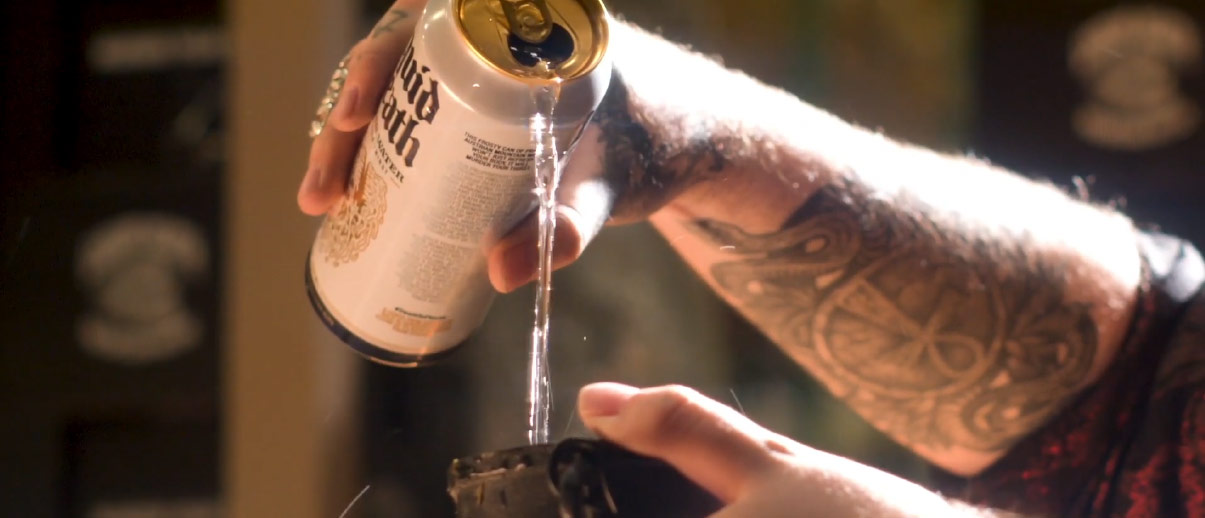Recent Articles
Could AI Help Write Better Research Briefs? Plus, 5 exciting AI tools to try
Delivering Authenticity to Brands: Lessons From Liquid Death
By Carlos Rosenwald, Senior Strategist, Egg Chicago
When it comes to branding, it’s easy to find yourself stuck between two different mindsets. On the one side there are “brand deniers.” They believe the age of big brands is essentially over as unemotional cost-benefit analyses have taken over, aided by instant online product reviews, search engine bargain hunting, and increased openness to private labels across categories and consumer groups.
On the other side are those I call “brand traditionalists.” They have largely dismissed changes in consumer behavior as minor shakeups rather than major disruptions and believe the same marketing rules and process and ways of doing business that have always applied should remain largely unchanged.
A more moderate observer would tell you both points of view have merit, but also largely miss the mark. While brand deniers are certainly right that big data has changed the way we shop, they neglect to admit that humans aren’t machines and that consumers’ behavior will never be 100% rational. That said, engaging consumers’ emotional in the ways we always have won’t work either. As humans, our emotional responses are constantly being re-written and re-wired. As a result, marketers can’t continually resort to same approaches and expect consumers to engage every time. So, what can brand deniers and traditionalists agree on? The shopping landscape we’re currently navigating is unlike any we’ve experienced before, and with savvy consumers who can easily detect an inauthentic sales pitch, marketers are the ones who need to re-wire their thinking.
So what does it take for today’s brands to win over people’s hearts and minds? The water brand Liquid Death proves to be a compelling case study. The Los Angeles-based brand offers mountain water from the Austrian alps in 16.9oz tallboy cans that promise to “murder your thirst.” It’s a bold stance in a heavily commoditized category that has anchored itself into narratives around self-care and sports performance for years.
The brand first caught media attention back in 2017, when founder Mike Cessario created an advertising video before he even had a product. The aggressive, disruptive tone made the video go viral, and so the brand was born. To date, Liquid Death has raised over $34 million in funding – the latest round of which included Conviavialité Ventures, Pernot Ricard Group’s venture arm. So, what has the brand done to capitalize on this investment?
To start, Liquid Death focused on a consumer tribe who had largely been ignored in the category. Deeming other water brands “not metal enough,” Liquid Death sought to address dejected, rebellious rock fans with a love for everything metal. They launched with the tagline “murder your thirst” and employed visual imagery that would be more commonly associated with 1980s heavy metal album covers than bottled water. They approached consumers without the potentially preachy, hackneyed language of wellness, performance and aspiration that have become standard in the category. They also avoided going the traditional route for consumer packaged brands, and adopted an approach more commonly seen in the alcohol space by making the brand first available in select bars, barber shops, and tattoo parlors in Los Angeles, Philadelphia, and Austin.
Beyond the brand and marketing message, Liquid Death further disrupted the bottled water space by taking authentic strides towards sustainability. The product is made out of 70% recycled material and the brand pledges to donate 5 cents for every can sold to nonprofits fighting plastic pollution and providing global access to clean drinking water. Viral campaigns revolving around #DeathToPlastic aimed at eliminating single-use plastic pollution maintain the brand’s creative and not-so-serious tone while effectively raising awareness about a serious issue further differentiates the brand from its competitors.
While the future of Liquid Death is yet to be seen, the brand’s initial success clearly demonstrates the potential power of taking a disruptive marketing approach to forge a new, authentic connection with consumers. Rock on!
